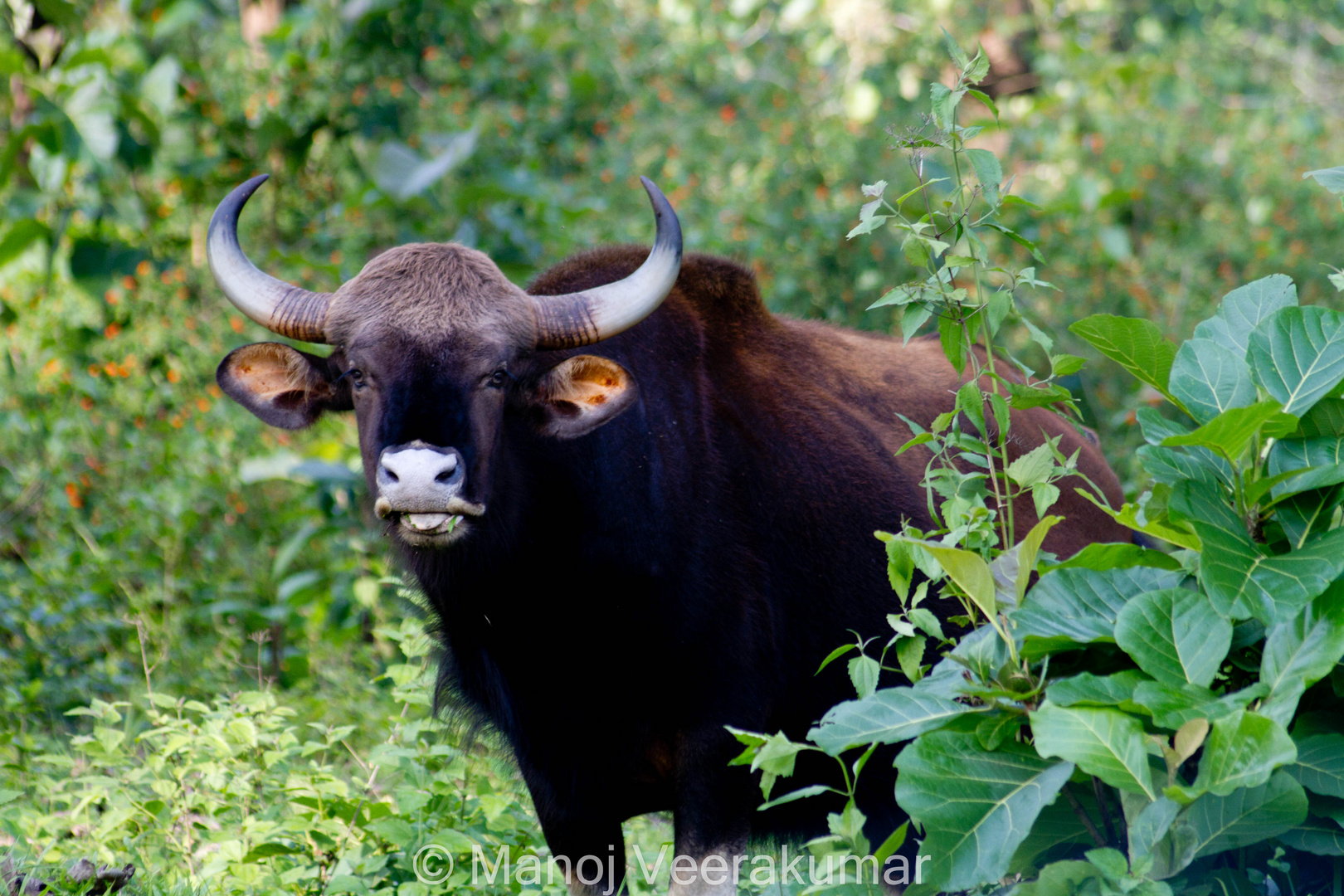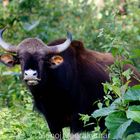Gaur
The gaur is an extremely large mammal. It has a head-and-body length of 250 to 330 cm (8.2 to 10.8 ft), not counting a 70 to 105 cm (28 to 41 in) long tail, and is 165 to 220 cm (5.41 to 7.2 ft) high at the shoulder. The average weight is 650 to 1,000 kg (1,400 to 2,200 lb), with an occasional large bull weighing up to 1,500 kg (3,300 lb).[3] Males are about one-fourth larger and heavier than females.[4]
The gaur is a strong and massively built species with a high convex ridge on the forehead between the horns, which bends forward, causing a deep hollow in the profile of the upper part of the head. There is a prominent ridge on the back. The ears are very large; the tail only just reaches the hocks, and in old bulls the hair becomes very thin on the back. In colour, the adult male gaur is dark brown, approaching black in very old individuals; the upper part of the head, from above the eyes to the nape of the neck, is, however, ashy gray, or occasionally dirty white; the muzzle is pale coloured, and the lower part of the legs are pure white or tan. The cows and young bulls are paler, and in some instances have a rufous tinge, which is most marked in groups inhabiting dry and open districts. The tail is shorter than in the typical oxen, reaching only to the hocks. The animals have a distinct ridge running from the shoulders to the middle of the back; the shoulders may be as much as 12 cm (4.7 in) higher than the rump. This ridge is caused by the great length of the spinous processes of the vertebrae of the fore-part of the trunk as compared with those of the loins. The hair is short, fine and glossy, and the hooves are narrow and pointed.[5]
Horns grow to a length of 60 to 115 cm (24 to 45 in).[4] Both sexes carry horns, which grow from the sides of the head, curving upwards. They are flattened and regularly curved throughout their length, and are bent inward and slightly backward at their tips. The colour of the horns is some shade of pale green or yellow throughout the greater part of their length, but the tips are black.[5]
A bulging grey-tan ridge connects the horns on the forehead. They present an elliptical cross-section; this characteristic is more strongly marked in bulls than in cows. Gaur have large dewlaps, forming a very powerful appearance. Dorsal ridges and dewlaps of females are less developed.[citation needed]
Gaur are said to look like water buffalo at the front and domestic cattle at the back due to their heavily muscled and enlarged forequarters compared to their relatively small hindquarters. They are the heaviest and the most powerful of all wild cattle, and are among the largest living land animals. Only elephants, rhinos and hippos consistently grow larger, and the weight of the largest subspecies of gaur roughly matches that of the giraffe.[citation needed]







Comentarios 0
Borrar comentario
Borrar comentario y respuestas